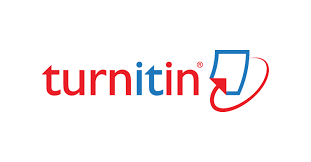THE NAKED TRAVELER BY TRINITY: CODE MIXING ANALYSIS
DOI:
https://doi.org/10.32493/efn.v4i2.9405Abstract
This paper aims to analyze the forms of code mixing, to find out Trinity’s ways for using code mixing, and to find out the reasons for Trinity using code mixing in the travel book The Naked Traveler. This research was a descriptive qualitative method. The researchers used some instruments those were field notes and voice recorders. The main data were collected by selecting and reducing the data from the main source. Classifying the data into six forms of code mixing, involving the validator for validating the data, analyzing the data based on the forms of code mixing by Suwito’s theory which steps were making the data display and making a conclusion. Based on the research finding, the results showed that the forms of code mixing found in the data such as noun (31.78%), verb (4.84%), adjective (5.81%), adverb (1.36%), preposition (0.19%) exclamation (0.39%), noun phrase (38.18%), verb phrase (3.29%), adjective phrase (3.88%) adverb phrase (2.13%) prepositional phrase (0.19%), hybrid of prefixes (1.74%), hybrid of suffixes (2.52%), hybrid of phrase (0.78%), the insertion of word reduplication (0.19%), the insertions of idioms (1.16%), independent clause (1.36%) and dependent clause (0.19%). The researchers also found out the ways of Trinity using code mixing that influenced by several factors such as bilingualism, vocabulary, prestige, speakers and speech partners, situations, and social community. The researchers found out the reasons of code mixing used two sources; there were Hoffman’s theory and virtual interview with Trinity. It was included being emphatic about something, repetition used for clarification, expressing group identity, and make it easy for readers to understand the purpose of her writing because not all English can be translated into Indonesian.
Keywords: code mixing; the naked traveler; travel book.
References
Ajibola, Michael, Oladosu. (2011). Code Mixing as A Sociolinguistics Medium in Some Selected Songs in the Nigerian Music Industry. Thesis. Ilorin: The Department of English, Faculty of Art. The University of Ilorin.
Bhatia, T. K., and Ritchie, W. C. (2004). Social and Psychological Factors in Language Mixing. In W. C. Bilingualism. Cambridge: Cambridge Univerity Press Blackwell Publishing.
Giyoto. (2013). Pengantar Sosiolinguistik. Surakarta: Fataba Press.
Hoffman, Charlotte. 1991. An Introduction to Billingualism. New York: Longman.
Holmes, Janet. 1992. An introduction of Sociolinguistics. New York: Longman Group.Uk Limited.
Kim, Eunhee. (2006). Reason and Motivations for Code-Mixing and Code- Switching. Spring 2006 Issues in EFL. Vol.4 No.1 retrieved on 13 September 2012. Massachussetts: Blackwell Publisher Inc.
Mesthrie, Rajent. et. al., (2004). Introducing to Sociolinguistics. Edinbrugh University Press.
Muysken, Pieter. (2000). Bilingual Speech: A Typology of Code Mixing. Cambridge: The Press Syndicate of The University of Cambridge.
Pateda, Mansoer. (1987). Sosiolinguistik. Bandung: Angkasa.
Rohmadi, Muhammad. (2004). Pragmatik: Teori dan Analisis. Yogyakarta: Lingkar Media.
Suwito. (1985). Sosiolinguistik: Pengantar Awal. Surakarta: Henary Offset.
Trinity. (2019). The Naked Traveler 8. Yogyakarta: Bentang Pustaka.
Wardhaugh, Ronald. (2006). An introduction to sociolinguistics. Oxford: Blackwell Publishing Ltd.
. (1998). An Introduction to Sociolinguistics Third Edition. Oxford: Basil Black- well Ltd.





